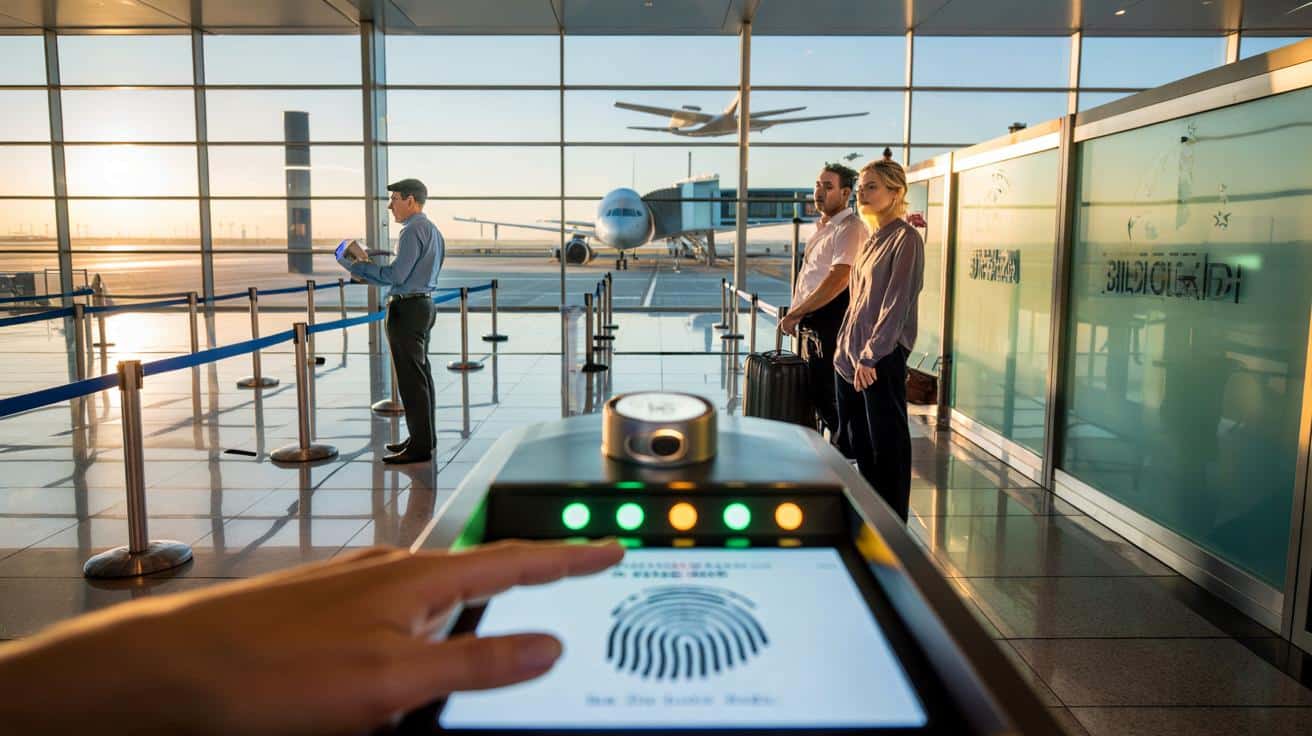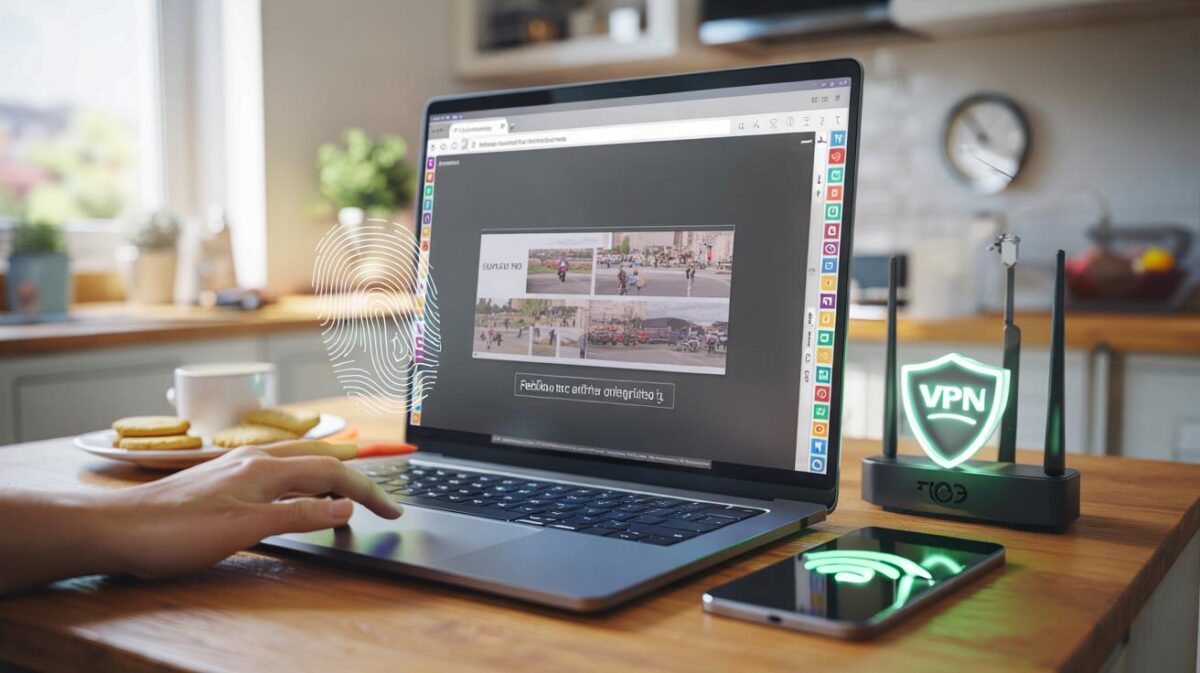The promise is smoother travel tomorrow. The fear is gridlock today.
Dawn light slid across the tiled floor at Madrid-Barajas as a line of new kiosks flickered awake. Border police tested hand gel dispensers, wiped camera lenses, and pulled blue tape taut to shape a lane that didn’t exist yesterday. A couple from Manchester shuffled forward with that half-curious, half-tired airport look; a cabin crew member whispered, “What’s different again?” and then smiled like it was nothing. It felt like a dress rehearsal with paying passengers. The biometric beeps sounded gentle, almost apologetic. A supervisor nodded, then glanced at the clock. He wanted the first traveller to clear in under two minutes. The screens pulsed green, then amber, then green again. This is the moment the Schengen border goes digital for millions, and Spain is choosing the smallest possible opening to learn. One flight to learn everything.
Why Spain is starting small
Spain’s airports live on rhythm and volume, with summer days that surge like tides and leave little room for experiments. That’s exactly why the government and AENA agreed to confine the switch-on of the EU Entry/Exit System to a single arrival on day one. A limited rollout lets police time each step, watch bottlenecks form, and tweak lanes before crowds build. **Containment over chaos.** It’s a message as much as a method: the system is coming, and Spain wants to keep planes on time while it learns.
The debut flight, according to officials, will be a non-EU arrival into a major hub with the staff, space, and signage to manage crowds—think Madrid or Barcelona, not a holiday island at noon. Industry trials around Europe suggest first-time EES registration takes roughly 2–4 minutes per traveller, faster for repeat visitors once biometrics are on file. Multiply that by a full Airbus and the math gets real, fast. By narrowing the test to one aircraft, planners can follow the queue in live time and compare outcomes against the stopwatch in their pocket.
Spain has reason to be cautious. British travellers alone made well over 17 million trips to Spain last year, and every one of them is now a third-country national at the Schengen border. The EES replaces passport stamps with face and fingerprints, tightening the data trail on who came and who left. There’s confidence in the tech, yet airports are human places where small frictions become big feelings. Starting small softens the risk and sends a signal to airlines and tour operators: we heard the warnings about queues, we’re not rolling the dice, we’re pacing this.
What travellers will actually do at the border
On your first EES encounter, you’ll go to a kiosk before you reach the glass booth. The screen asks you to scan your passport, look into a camera, and place fingers on a reader—often four at once. You’ll confirm basic details and your travel purpose, then a border officer validates everything and clears you. **Your first EES registration will take longer than a normal passport check.** After that, future trips should be faster because your biometric profile sits in the system for a while.
Small habits help. Keep your passport out of that leather sleeve, trim glare by lifting your chin slightly, and dry your fingertips before touching the reader. Families should move as a unit and let the lead adult do the talking, while teens keep their own documents ready. Don’t film staff during checks, as it slows the line and often triggers a reset. Let’s be honest: nobody actually does that every day. The goal is a clean scan, not a perfect pose.
There’s a quiet truth in the first wave of travellers: the system is new, but the patience is old. We’ve all lived that moment where the queue inches, your phone battery dips to 3%, and you tell yourself the belt will appear any minute.
“Give us your eyes and fingers once, and we’ll give you minutes back on your next trip,” a Barajas border supervisor told me, tapping the top of a kiosk like it was a trusty espresso machine.
- Arrive earlier than your pre-EES routine, especially for school holidays and morning banks of flights.
- Remove hats and big glasses before the camera. Wipe fingertips if you used sanitiser.
- Keep passports open at the photo page, one per person, no plastic sleeves.
- Children under 12 may skip fingerprints, but follow the lane signs and staff instructions.
The stakes for a country built on arrivals
Spain’s aviation map is a necklace of beach gateways and big-city hubs, and the EES touches them all—airports, ferries, land crossings from Gibraltar and Morocco. A single-flight launch isn’t a stunt; it’s a rehearsal with consequences. If minute-by-minute data shows lanes breathing well, airports can scale to four flights, then ten, then an entire morning bank. If a choke point emerges at fingerprints, teams can add staff or pull forward more kiosks before the weekend rush. **The real product here is confidence.**
There’s a tourism story beneath the tech story. Tour operators need reliable connection times, families want to know if baggage reclaim starts before lunch, and airports want to avoid the photo that lives forever: red-faced crowds under a flickering sign. A calm debut nudges that risk down. It also gives Spain a chance to speak directly to British travellers who fill hotel terraces and restaurant tables from the Canaries to the Costa Brava. Reassurance isn’t a press release; it’s a queue that moves.
What happens next is iterative rather than dramatic. Kiosks find their final positions, agents learn which phrases unstick a nervous line, and airlines adjust boarding cut-offs on routes with heavier third-country shares. Data from day one informs day seven and day thirty. The system logs your entry, then your exit, replacing stamps that often smudged and left guesswork. Most people will barely remember the first scan a month from now. For an airport, that’s the win worth chasing.
Practical moves you can make today
Give yourself a buffer on your first post-EES trip—arrive a notch earlier than you once did, and keep documents ready from curb to gate. Moisturiser helps if your skin is very dry, but go light right before fingerprints so the reader can “see” your ridges. If you usually travel with a baseball cap, take it off well before the camera; smoothing the process beats saving a bad-hair-day photo. Travel with a power bank, because a dead phone is a horrible companion when you’re checking gate changes. A clean routine pays back minutes.
Watch the signage near arrivals, since airports may split flows between first-timers and repeat EES users. Keep families and groups tight, and nominate a “doc captain” who holds boarding passes and hotel details if asked. If you’re anxious, tell the officer; they do this all day and will slow the steps without fuss. Spain’s border staff aren’t trying to catch you out; they’re trying to get you through. Breathe, blink, look up, and let the machines do their part.
One last thing from the people who live at these gates.
“If travellers come prepared, this is less intrusive than riffling stamps and asking for hotel bookings,” said a veteran officer in Málaga. “Eyes, fingers, done. The second trip is when the magic shows.”
- Passport validity: check you meet Schengen rules well before you fly.
- Hands: clean and dry beats slick with gel; rub palms on jeans if needed.
- Kids: under‑12s often skip fingerprints, but not face capture—follow staff.
- Special cases: mobility devices and strollers can go through, just allow a few extra minutes.
Where this could lead, and why it matters
The point of a single-flight start isn’t to make headlines; it’s to make the second day boring. If Spain’s measured rollout holds, the EES becomes background noise for most travellers, like e-gates did a decade ago. It may even tilt the experience toward something better: predictable lines, fewer random questions, a clear trail that proves you left when you said you would. Airports are living systems that learn quickly when the stakes are immediate and the feedback is visible. A cautious day one creates space for that learning to stick. Share your experience, tell the friend who flies next week, and watch the curve smooth from nerves to normal.
| Point clé | Détail | Intérêt pour le lecteur |
|---|---|---|
| Spain’s single-flight launch | First EES activation limited to one inbound arrival at a major hub | Lower risk of queues on day one; clearer messaging for passengers |
| First-time process | Passport scan, face capture, fingerprints, officer validation | Know the steps so you can move faster and avoid retakes |
| Time impact | 2–4 minutes per new traveller in early tests; faster on repeat visits | Plan arrival timing and connections with realistic expectations |
FAQ :
- When does Spain start using the EES?The system is being phased in now, beginning with a single test arrival and scaling across routes and airports over the following days and weeks.
- Will Brits flying to Spain need to register?Yes. UK travellers count as third‑country nationals at the Schengen border and complete EES on their first entry.
- How long will the first check take?Plan for a few extra minutes—industry pilots suggest roughly 2–4 minutes for a first‑time registration, then quicker on future trips.
- Do children give fingerprints?Children under 12 are typically exempt from fingerprints, though face capture and document checks still apply. Follow lane signage and staff guidance.
- What if I enter Spain by land or sea?The same rules apply at external Schengen borders, including ferries and the land crossing with Gibraltar, with local layouts tailored to each site.








